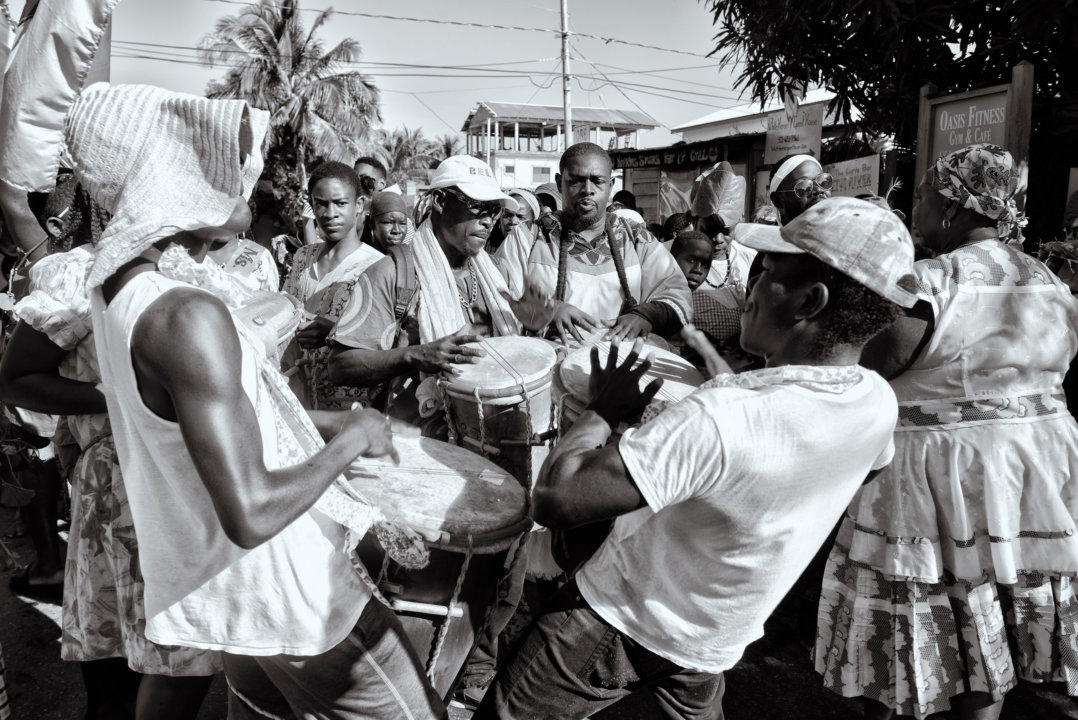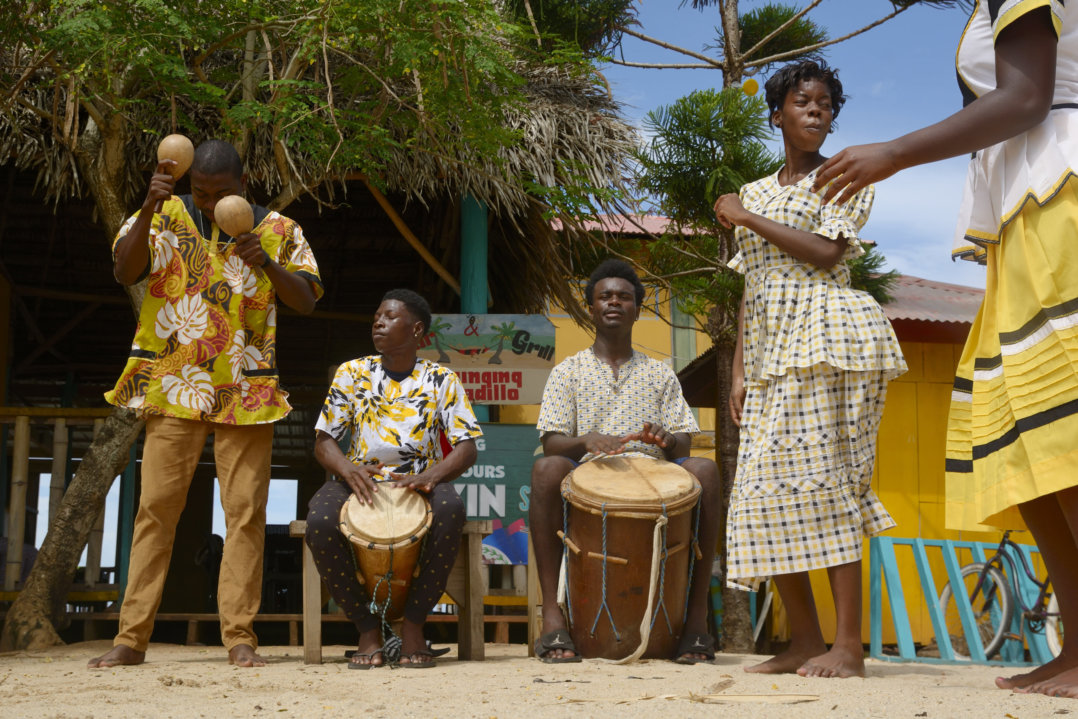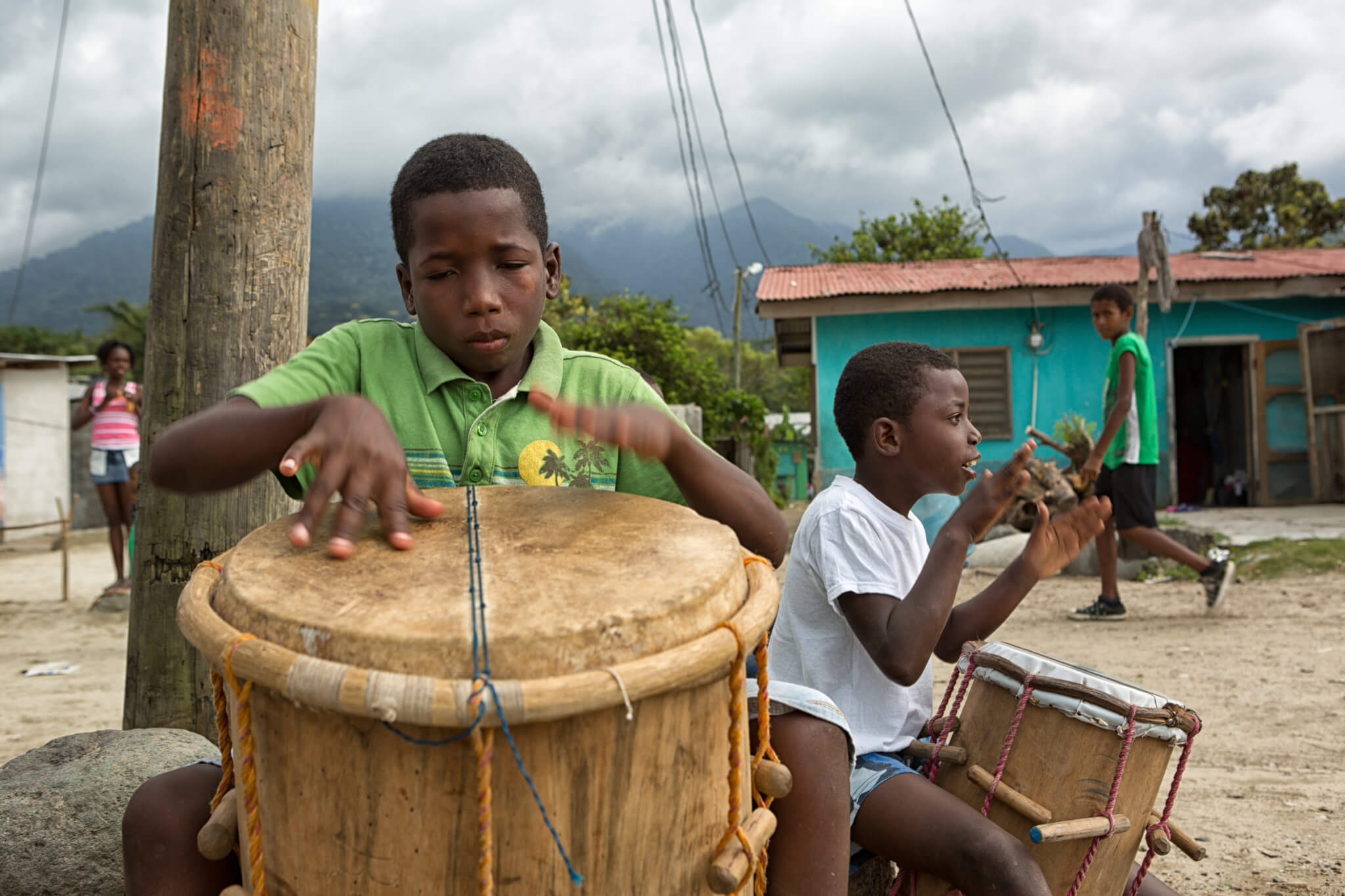A Garifuna Arts and Culture Promoter Considers How Kwanzaa Can Bridge Her Latinx and Belizean Kin
Growing up in Dangriga, Belize, and taking pride in being part of one of the five predominantly Garifuna communities in Belize, was challenging. I attended Sacred Heart Catholic Primary School where I was taught that who I was culturally was not important. The importance of assimilating to the British system that was imposed in all colonies around the world made our little town no exception, coupled with the learning institution run by nuns and priests who were from the United States. At school, it was considered imperative for us to leave our “savage” customs and tendencies to a create a new and first-world quality of living.
The awareness of our colonial past and the role history has played in our separation takes us back the Eastern Caribbean island of St. Vincent. Our people, known as the Garínagu in the Garifuna language, are descendants of enslaved African people who intermarried with the island’s Indigenous Arawak people, and our language is a mix of the Awarakan language and Vincentian Creole. The Garifuna were exiled in 1797 because they had formed maroon communities in the hills of St. Vincent, making them a threat to British colonists. They later moved to coastal communities in Belize, Nicaragua, and Guatemala, where they were again living under colonial rule by the British and the Spaniards.

For almost two centuries, Garifuna language and culture were largely suppressed. My parent’s generation was forbidden from speaking our native tongue at school and from attending or participating in the weeklong Garifuna spiritual ceremony called Dugu, which pays homage to the ancestors. I remember hearing stories from my late aunt of children being ostracized or even expelled from school for participating in these ceremonies.
My awakening came in 1993 when I worked for a local politician who was what we deemed “culturally and spiritually aligned” with the Garifuna. He insisted that the children of the community be taught to appreciate and celebrate who they are, and develop a sense of cultural pride. For example, he encouraged children to plant cassava and use it to make bread, a staple food of the Garínagu.
In an effort to highlight these similarities and differences between the Garifuna and the other Belizeans, we decided to promote local cultural groups for regional carnival celebrations, incorporating live drums, maracas, and cultural chants. Noticing the positive response from the community, we took this concept to another level by participating in the national carnival where we won prizes for originality and top performance. Soon after, we realized we were as guilty as our government for shunning and excluding our Latinx Garifuna brothers and sisters, and we needed to create a platform to bridge us together.
In 1995, we decided to invite Latinx Garifuna to join us for our Garifuna Settlement Day celebrations in Belize, and we began planning our own trips to Guatemala and Honduras for their Garifuna arrival days. That same year, the Belizean government hosted a group from New York called Garifuna Kids, featuring young artists from Honduras, Guatemala, and Belize who were born and raised in New York and could sing in their native tongue. The event helped youth in our country to feel like it was finally becoming cool to be who we are, and to recognize that we are the same people separated by colonialism. The Garínagu who stayed in Honduras and Guatemala, countries that were colonized by Spain, spoke and wrote Spanish, while those who came to Belize, which was a British colony, spoke and wrote English, but what united us was the native tongue of Garifuna.
In 1997, I had the opportunity to lead a government-sponsored contingent of musicians, which included the late Belizean Garifuna musical icon Andy Palacio. After years of teaching people on the coast of Nicaragua to retrieve their African Amerindian linguistic and cultural heritage. He was now helping us to create a bicentennial celebration remembering the first arrival of the Garínagu to the shores of Honduras. Palacio met and connected with young Honduran Garifuna musical protégé Aurelio Martinez, both of whom would form an unbreakable bond becoming cultural ambassadors to each other’s countries and a musical connection that would unite both cultural communities.
Over the next eight years, I served as the southern regional coordinator of the government of Belize’s NationalInstitute of Culture and History; as the coordinator of the U.S. Embassy in Belize’s Arts Envoy Program; and as a coordinator for the European Union’s economic development initiatives in Belize, harnessing my knowledge of underserved communities to help rural Belizean women to become advocates of social and environmental change. Through these efforts, we started seeing ourselves as one community with several different identities among us. One of the regional projects that stood out was Proyecto Afro-Caribe, a band featuring Afro-descendant artists from Central America and the Caribbean who toured their regions of origin playing their native instruments and singing in their indigenous languages.

Around 2001, local businessman John Castillo began inviting cultural groups to perform every Sunday at his restaurant J&N’s. The event became known as Culture Sunday, and it generated an income for cultural workers. At that time, I was marketing director of the local radio station, so we joined in with local broadcast. In 2003, the Sunday Concert Series was adapted to the kinds of annual block parties I’d seen in different boroughs while visiting New York. We would block off a certain area of the community and set up a stage for free performances of music, dance, theatre, and, poetry. The tradition became even more structured in 2006 after I was elected as a local town councilor and appointed to lead culture and tourism.
In 2011, I received training as an UNESCO cultural heritage specialist, and in 2016, I immigrated to the United States with the goal of parlaying my experiences into all kinds of cultural and educational outreach. I helped to bring Garifuna artists to the Smithsonian’s Folklife Festival, and volunteered at the New York’s Central Park Stage, globalFEST, Flushing Town Hall, and the New York City Mayor’s Office with multicultural productions. I also consulted on a BBC documentary about the Garifuna history and culture, and on the London-based Soul Jazz Records’ Black Caribs of Belize album, a collection of traditional Garifuna rhythms, working with popular groups such as Garifuna Jazz Ensemble and Chief Joseph Chatoyer Dance Group.
Living in New York, I got used to seeing all kinds of community cultural events for the different ethnic neighborhoods and decided to join the Brooklyn Arts Council Folk Arts Community Group. We local Garifuna understood that if we wanted to be recognized, we should show up for the cultural celebrations of other ethnic groups. For example, we would celebrate the Garifuna settlement days of Belize, Guatemala, and Honduras, and invite various other ethnic groups to come and see our events. In turn, we would attend events such as Russian cultural celebrations, Indian Dwali, and Pan Yaad celebrations with our Caribbean kin. In so doing, it allowed us to see how we could promote something that’s initially outside of our own cultural heritage.
That lesson is one that I continued to reference while I served as the Folk Life Specialist at Maryland’s Sandy Spring Museum before the pandemic. In that role, I was tasked with documenting, organizing, and working with migrant and practicing cultural clusters and embassies around the greater Washington, DC, area, and with creating a database of all these groups to promote oral traditions. Libraries are especially instrumental in engaging schools to celebrate diversity and teach tolerance, equity, and inclusion, and I was able to bring parts of my own Garifuna heritage into that space.
The pandemic has affected the yearly Garifuna culture and Black American cultural events, but this winter’s observance of Kwanzaa (December 26 to January 1) represents an opportunity for Latinx and Belizean Garifuna, and all other students, parents, librarians, educators, and community leaders to reflect on the Black experience, to discover what makes it special, and find ways of showing up for Black people in America.
Black American activist Maulana Karenga created Kwanzaa in 1966 as a way to reinforce Black pride and African ancestral identity in the aftermath of the 1965 Watts Riots, which occurred as a response to anti-Black police brutality in Los Angeles. During the seven-day celebration, participants are asked to reflect on words from the widely spoken African language of Swahili, including Umoja (Unity), Kujichagulia (Self-Determination), Ujima (Collective Work and Responsibility), Ujamaa (Cooperative Economics), Nia (Purpose), Kuumba (Creativity), and Imani (Faith).
Kwanzaa is an occasion to trace Black heritage back to Africa and into the many communities it has penetrated throughout the Americas, and that includes us Garifuna. As such, I encourage you to use the winter break to gather your children or your students in youth programs and jump online to look up the origins of all the aforementioned cultural traditions and the artists and activists whose work has helped to educate the public about them. For us Garínagu, we say it is Jankunu (Wanaragua) Season. Happy Holidays, Feliz Navidad, Buidu lamuga hafedu.
-Author Barbara Norales is a contributing writer to ProgressReport.co.
Want to learn more about UnidosUS’s efforts to understand and uplift diverse Black voices in its community? This year it is sponsoring AfroLatinx Líderes Avanzando, a policy and advocacy training program for professionals identifying as both Black and Latinx.

